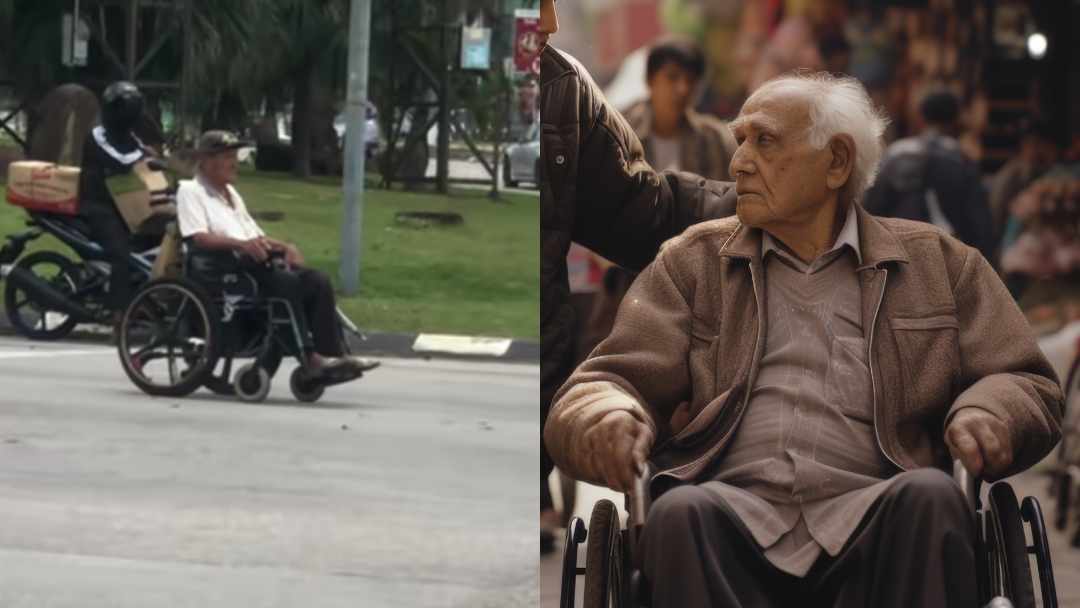MALAYSIA: A recent video of an elderly man in a wheelchair waiting at a traffic light in Kuantan has stirred debate online, not just for its unusual nature but for the deeper issues it highlights. While some social media users joked about the situation, saying, “He is watching too much, Mr Bean,” others raised serious concerns about Malaysia’s infrastructure for the elderly and people with disabilities (PWDs).
A viral moment that raises real concerns
The video, originally shared by TikTok user @iyul, shows the elderly man sitting in a wheelchair, positioned between moving vehicles at a busy junction while waiting for the green light. Many netizens were shocked by the situation, questioning how a vulnerable pedestrian ended up in such a risky position.
WeirdKaya, which covered the viral clip, noted that while some found humour at the moment, many others expressed worry over whether the country’s infrastructure is truly inclusive for PWDs and senior citizens. The scene, though seemingly isolated, opens a much-needed discussion on pedestrian safety, accessibility, and urban planning.
Infrastructure challenges and government efforts
Malaysia has been trying to improve accessibility for senior citizens and PWDs. The National Policy for Older Persons (NPOP), introduced in 2011, aims to promote the well-being and independence of the elderly. However, as highlighted by HelpAge International, implementation has been fragmentary and inconsistent, with responsibilities divided across multiple ministries.
One of the biggest concerns is pedestrian infrastructure. Malay Mail previously reported how illegally parked cars on sidewalks often force wheelchair users and other pedestrians onto busy roads, creating hazardous situations. Transport Minister Datuk Seri Dr Wee Ka Siong has reiterated that while mobility aids such as wheelchairs are permitted on pedestrian paths, the lack of proper enforcement against obstruction remains a challenge.
Malaysia’s progress towards inclusivity
Despite these challenges, Malaysia has made notable progress in urban planning for the elderly. The 12th Malaysia Plan includes various initiatives to create senior-friendly communities with better healthcare, housing, and accessibility measures. The United Nations Development Programme (UNDP) has also highlighted efforts to integrate technology and community support into elderly care, though the demand for more accessible facilities remains high.
On the transportation front, the Global Future Cities Programme (GFCP) has reported that Malaysia is working to improve mobility for PWDs by introducing wheelchair-friendly public transport and pedestrian pathways. Cities like Penang and Kuala Lumpur have taken steps towards improving accessibility by incorporating ramps, tactile paving, and designated public transport spaces for PWDs.
A call for more inclusive urban planning
While four Malaysian cities—Taiping, Penang Island, Sibu, and Ipoh—have been recognised under the World Health Organization’s Global Network for Age-Friendly Cities and Communities, more can still be done to ensure all urban centres prioritise inclusivity. As noted by the Institute of Strategic and International Studies (ISIS) Malaysia, ageing populations require cities to be adaptable, with safer pedestrian crossings, better public transport, and a more wheelchair-friendly environment.

